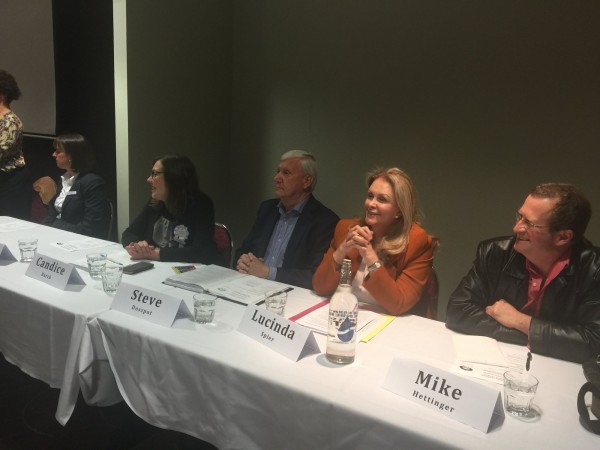
There are 141 Canberrans standing for the 2016 ACT Assembly election. Apart from candidates for the major political groups, most have little chance of success, so why are the independents and minor party hopefuls standing?
Subject to certain conditions, it is anyone’s democratic right to do so. Thus we have those who believe they have a contribution to make free of the limitations and disciplines of major party policies, those who stand for a principle, and those who want to be heard on a particular issue … Some perhaps are stalking-horses (both good and bad) or simply want to be on the ballot paper. Perhaps too there are spoilers looking to deny a big party outright victory.
Most such candidates are well-meaning people with a genuine commitment to the community, however the problem is whether or not the contribution will be of positive benefit to Canberra.
Granted the increase in Assembly membership has provided opportunity for more civic-minded representatives, but it has not helped the independent aspirants because the increase has reduced the number of MLAs to five in each electorate, thus lifting the quota of votes to be elected to a challenging 17 percent.
This reduces the chances of outsiders so only one or two with broad-based support might make it – an outcome which could cause difficulties for ACT governance.
There a those who rightly claim an outsider or two holding the balance of power would keep a government honest, but it is equally true this representation could end up as the tail wagging the dog with disastrous consequences if pet projects were demanded as the price of support.
And even if it’s initially possible to grant, no government over a four-year term can guarantee its policies will be implemented unchanged, therefore any commitment to an outsider’s loyalty in exchange for long-term projects cannot be assured. This makes for an awkward situation for the balance-of-power holder who wants to be re-elected.
The problem would be solved if these independent free spirits went into the political parties’ tents but that is unlikely, so the electorate faces a Hobson’s choice: majority party government or an independent or two with undue influence.
For those concerned by this lack of alternative, the solution is with the community and there are signs it is responding.
Bad or poor planning proposals have led to the formation of an increasing number of suburban and regional groups to let government know consultation is required before decisions affecting their patch are made. There is no reason these local bodies should not continue after the Assembly election and be welcomed by the new government, whatever shape it takes and however it is formed.
Irrespective of the composition of the next ACT administration, feedback from the electorate will be invaluable in avoiding collective rubberstamping by government MLAs of proposals. It could herald a new co-operative approach between elected representatives and those who put them there.
Because our homes, our suburbs, our city are so important to us all, MLAs and electors, can we not work together?
Pictured above are candidates for Kurrajong Brooke Curtin, Candice Burch, Steve Doszpot (all from the Canberra Liberals), Lucinda Spier and Mike Hettinger (representing the Canberra Community Voters Party) at the Inner South Canberra Community Council election forum last month.





















